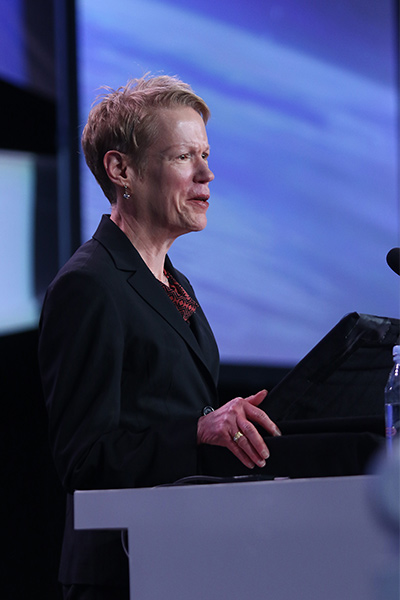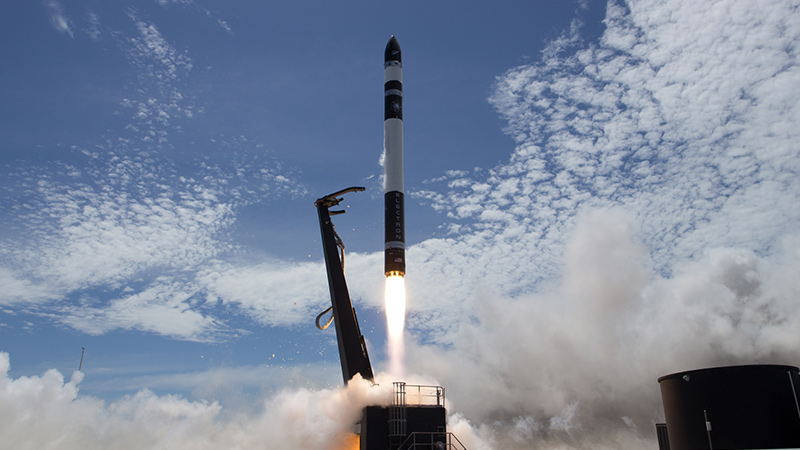Stay Up to Date
Submit your email address to receive the latest industry and Aerospace America news.
Chief of National Reconnaissance Office says request aims to increase launch options
COLORADO SPRINGS, Colo. — The U.S. National Reconnaissance Office, known for buying gigantic, “exquisite” spy satellites, is learning to think small for some of its needs.
“We want to explore what the tiny rocket marketplace can provide for us,” NRO Director Betty Sapp told an audience here at the Space Symposium on Tuesday.
She was referring to the burgeoning marketplace of small launch vehicles.
On April 23, the agency will issue a final request for proposals to industry for “Rapid Acquisition of a Small Rocket,” with bids due at the end of May. This follows a draft request for proposal published in March. The NRO told me this is the first time the agency’s Office of Space Launch will procure a rocket exclusively to launch small satellites.
The agency aims to award contracts in June for the winning companies to complete the project in time for a June 2019 launch.
Sapp said there were many responses to the draft request, and that “the one universal comment” was distaste for the term “tiny rockets.”
“We’ll work on that before we get the final RFP out later this month,” she said.
The small rocket market has been growing due to increased demand for small satellites.
The NRO says for this project they want a rocket that is smaller than the Minotaur 4 built by Virginia-based Orbital ATK, which is 24 meters high and is capable of launching 1,730 kilograms to low Earth orbit. The agency says rockets considered for this request must also have achieved a successful test flight, meaning reaching the intended orbit.
Launch vehicles that would meet these requirements include the Electron rocket (seen in photo above) built by Rocket Lab, which is headquartered in California. Rocket Lab CEO Peter Beck told me his company would wait to see the final NRO request before commenting on whether it will apply. Beck says there is growing interest in small rockets because they give customers “the flexibility to insert to an orbit they want on their timeframe,” which reduces the need for a spacecraft to share a ride into orbit on a large rocket alongside other satellites.
The dynamic nature of surveillance targets requires the NRO “to keep on innovating at an even faster rate,” Sapp said, adding, “commercial space will be fully considered in the development of every future space system.”
Sapp illustrated the importance of collecting intelligence as fast as possible with examples including how the NRO provided President Lyndon Johnson with film from space of the Six-Day War in June 1967. The problem was the agency delivered the film only after the war between Israel and its Arab neighbors was over.
“The information was a lot less valuable [after the war] and the president was not happy,” she said, citing it as “an emotional event” that spurred the agency to coordinate with companies to “develop digital photography that could be delivered much quicker.”
About Tom Risen
As our staff reporter from 2017-2018, Tom covered breaking news and wrote features. He has reported for U.S. News & World Report, Slate and Atlantic Media.
Related Posts
Stay Up to Date
Submit your email address to receive the latest industry and Aerospace America news.





